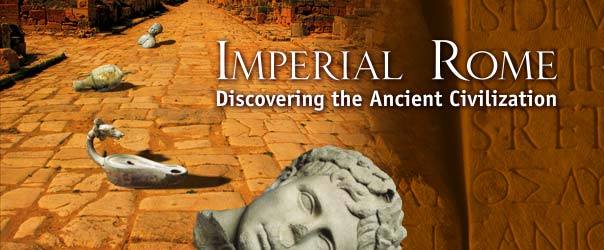Introduction to Imperial Cult

Don't Forget to Share!
WHAT IS IMPERIAL CULT?
-Video is at the bottom of the page-
PDF: Equity Imperial Cult
ROMAN IMPERIAL CULT. The Roman imperial cult may be defined as the offering of divine honors to a living or dead emperor. With antecedents in Egypt, Persia, and Greece, the ruler cult developed further in the Republic (Taylor 1931: 35–57), especially under Julius Caesar (Weinstock 1971), and in the time of Augustus (Taylor 1931: 142–246). Beginning with Tiberius, emperor worship played a major role in the origin and spread of Christianity (Jones in ANRW 2/23/2: 1023–54).
Tiberius. Tiberius resisted all honors offered to himself (Rostovtzeff 1930) and his mother, Livia (Grether 1946). In 25 c.e. he refused to permit the province of Farther Spain to build a temple in his name, declaring in a famous speech to the Senate: “I am a mortal, and divine honors belong only to Augustus, the real savior of mankind” (Tacitus Ann. 4.37–38; Étienne 1958: 420). Suetonius (Tib. 26.1) referred to an edict issued by Tiberius which forbade other forms of deification, including swearing allegiance and the erection of statues. Nevertheless, the title divus appeared on a denarius of Tiberius and a papyrus from 37 c.e. called him “son of the god” (Cuss 1974: 139).
Caligula. Gaius, nicknamed Caligula because of the “little boots” he wore as a boy, proposed that Tiberius be deified, but the Senate refused, citing strained relations during his last years. Convinced of his own divinity, Caligula demanded that he be worshiped. He believed he was the incarnation of Jupiter, and appeared in the dress of other gods and goddesses. Temples were erected in his honor at Miletus and Rome (Dio Cass. 59.11.12 and 28.1–2). Following his sister Drusilla’s death in 38 c.e., Caligula had her deified, aided by a senator who swore under oath that he had seen her apotheosis, or ascent into heaven (Dio Cass. 59.11.3).
When Alexandrian Greeks ordered images of Caligula set up in the synagogues of that city, a delegation of Jews led in 39 c.e. by Philo complained to the emperor. Philo noted that while Jews could not worship Caligula, many of them did regard him as “savior and benefactor” (Legatio 75–114 and 349–67; Price 1984b: 184, 209). That same year, Caligula further offended Jewish monotheistic attitudes by ordering Syrian legate Petronius to erect a huge bronze statue of himself in the Jerusalem temple. Fortunately, Petronius’ delaying tactics and the intercession the following year of Jewish king Agrippa caused the emperor to abandon the project (Smallwood 1957).
Caligula was not deified following his assassination by officers of the imperial guard—in fact, only the intervention of his successor and uncle, Claudius, prevented the Senate from declaring him “an enemy of the state.”
Claudius. Like Tiberius, Claudius generally refused divine honors, but, in a famous letter to Alexandria in 41 c.e. (Barrett 1989: 47–50), while claiming that the establishment of priests and temples is “a prerogative to the gods alone,” he did permit the erection of statues to himself and his family throughout the city. In his introduction to this letter, the Egyptian prefect urged reading it in order to appreciate “the majesty of our god Caesar” (Charlesworth 1925). Despite Claudius’ stance in the Alexandrian letter with regard to temples, one was erected in his honor in Britain following a Roman victory there (Tacitus Ann. 14.31). In addition, there is evidence of Claudius’ being called “lord” (Cuss 1974: 59) and “savior of the world” (Scramuzza 1940).
Nero. Nero had Claudius deified, the first emperor to be so honored since Augustus; but the influential philosopher Seneca, in a clever satire called the Apocolocyntosis, ridiculed the idea of Claudius as a god (Altman 1938). From 65 c.e. on, Nero was depicted on coins as “god,” and as “Apollo the Lyre Player,” and wearing the radiate crown of a deified emperor (Charlesworth 1950). In 55 c.e. the Senate set up a statue of Nero in the temple of Mars Ultor (Tacitus Ann. 13.8.1)—the first time since Caesar that an emperor had been directly associated with a god in Rome. In 65 c.e. he rejected a proposed temple to “the divine Nero,” citing the tradition that only dead emperors were divine, but he did erect in his place a hundred-foot bronze statue of himself as the sun with a star-shaped crown.
The imperial acclamations by which Nero was greeted had divine overtones, e.g., “Our Apollo … by thyself we swear” and “O Divine Voice! Blessed are they that hear you!” (Dio Cass. 62.20.5 and 63.20.5). In a Boeotian inscription from 67 c.e. Nero was called “lord of the whole world” (Deissmann 1927: 354), further evidence that “lord” was a prominent title in the imperial cult (Jones 1974: 85). When the king of Armenia greeted Nero in 66 c.e. as “master” and “god,” the emperor agreed that he was indeed close to divinity (Dio Cass. 63.14). Before he committed suicide, Nero had been declared “an enemy of the state” by the Senate. He was never consecrated, although he did deify his wife Poppaea and their infant daughter.
Vespasian. Nero’s successor, Vespasian, generally refused divine honors, although on his deathbed in 79 c.e. he joked: “I suppose I am becoming a god” (Suet. Vesp. 23.4). He had earlier dedicated a temple to Claudius (Suet. Vesp. 9.1) and was regularly called “lord” (Cuss 1974: 61) and “savior” (Scott 1936: 21). Vespasian’s son and successor, Titus, had him consecrated, and a temple to the deified Vespasian was erected in Rome.
Titus. Titus was hailed as “savior of the world” (Deissmann 1927: 364) and was consecrated by his brother, Domitian, who succeeded him. As deifying members of the imperial family was becoming a common practice, Titus consecrated his sister Domitilla (Scott 1936: 45–48).
Domitian. Domitian insisted on being recognized as a divine deus praesens, an important term in emperor worship (Cuss 1974: 139). Coins show him seated on a throne as “father of the gods” (Abaecherli 1935), and a huge marble statue of himself in Ephesus became the focal point of the imperial cult throughout Asia Minor.
Domitian insisted on being addressed, by letter or in person, as “our lord and god” (Suet. Dom. 13; Scott 1936: 88–112) and all who refused were punished. That his persecution extended to Christians is clearly reflected in the book of Revelation (Scherrer 1984). Emperor deification, including offerings of incense, prayers, and vows, was now obligatory and used as a means to identify followers of the Christ. After his death in 96 c.e., statues of Domitian were destroyed by angry senators and he was declared “an enemy of the state.” Many of his official decisions were rescinded by his successor, Nerva.
Trajan. Trajan became emperor in 98 c.e. and had his predecessor consecrated. Generally, he rejected divine honors, but he did allow a temple to be erected in his name at Pergamum, and after 100 c.e. his name began to be linked with that of Jupiter. In the year 112 c.e. Christians in Bithynia and Pontus were investigated by the Roman legate Pliny the Younger. In a famous letter to Trajan (10.96) Pliny wrote (Scott 1932):
This is the course that I have adopted in the case of those brought before me as Christians. I ask them if they are Christians. If they admit it I repeat the question a second and a third time, threatening capital punishment; if they persist I sentence them to death … All who denied that they were or had been Christians I considered should be discharged, because they called upon the gods at my dictation and did reverence, with incense and wine, to your image which I had ordered to be brought forward for this purpose.
Trajan then offered this reply (10.97; Bickerman 1968):
You have taken the right line, my dear Pliny, in examining the cases of those denounced to you as Christians, for no hard and fast rule can be laid down, of universal application. They are not to be sought out; if they are informed against, and the charge is proved, they are to be punished, with this reservation—that if anyone denies that he is a Christian, and actually proves it, that is by worshiping our gods, he shall be pardoned as a result of his recantation, however suspect he may have been with respect to the past (Bettenson 1947: 5–7).
When Trajan died in 117 c.e., his apotheosis was attested in several traditions, and he was deified by his successor, Hadrian.
Hadrian. Hadrian was frequently identified with the Olympian Zeus and permitted the erection of temples and statues in his honor (Raubitschek 1945). The easy deification of his twenty-year-old Bithynian lover, Antinous, who had drowned in the Nile in 130 c.e., was a scandal for both Jews and Christians. Coins depict Hadrian’s apotheosis and that of his empress Sabina who preceded him in death.
Antoninus Pius. Under Hadrian’s successor, Antoninus Pius, the demand to offer sacrifice before the emperor’s statue had become a test of Christian loyalty to the state. Noncompliance led to the death penalty, as it did in the case of Polycarp, bishop of Smyrna, who, having refused to say “Caesar is lord” and offer incense to Antoninus’ image, was sentenced to death by burning (156–57 c.e.; Barnes 1967). Following his death in 161 c.e. Antoninus Pius was consecrated by the Senate and his successor, Stoic philosopher Marcus Aurelius, and coins depicted his apotheosis and that of his empress, Faustina (Mattingly 1948).
Marcus Aurelius. Under Marcus Christians were executed at the Festival of the Three Gauls. A special ruling of the Senate allowed imperial cult priests to use “condemned prisoners” in the arena instead of the more expensive gladiators (Oliver and Palmer 1955). Marcus had no sympathy for Christians. They were brave, but blindly obstinate (Meditations 11.3). In 178 c.e. the Platonist philosopher Celsus, in his “True Doctrine,” criticized Christians for refusing to offer “due honors,” including sacrifice to the emperor, especially since “whatever you receive in this life you receive from him” (Origen Cels. 8.55–67). Among the Christian statements of defense was that of Tatian who, in his “Address to the Greeks,” ridiculed Hadrian’s deification of his lover Antinous and declared that, while he will give human kings human honor, he will worship God alone. Marcus was succeeded by his son, Commodus, who deified his father and struck coins depicting his apotheosis.
Commodus. Commodus, degenerate like Caligula, Nero, and Domitian before him, demanded divine honors (Oliver 1950). He received acclamations and a large gold statue was erected in his honor (Dio Cass. 73.15.3 and 74.2.3). During Commodus’ first year (180 c.e.) twelve Christians in Africa refused to swear a loyalty oath to him and were beheaded (Cuss 1974: 61). A few years later, Roman senator Apollonius declared himself a Christian, refused to swear an oath to “our lord Commodus the emperor” or to offer sacrifice to his image, and consequently was sentenced to death by beheading. Commodus died in 192 c.e. and was condemned by the Senate. He was, however, later consecrated by Septimius Severus.
Septimius Severus. Severus accepted the divine title “lord” and married Julia Domna, daughter of the Sun priest at Emesa, thereby bringing the empress into the imperial cult. She was deified following her death in 217 c.e. Tertullian, in his “Apology” (197 c.e.), argued that Christians need not offer sacrifice to the emperor who is only human. They could swear by his health or safety, but if he is ever referred to as “lord,” there must be no implication of his divinity. Hippolytus of Rome, in his “Commentary on Daniel,” claimed Christians suffered the death penalty for refusing to worship the gods (4.51). Men were burned and their bodies thrown to beasts, children were killed, and women were treated with shame.
Decius. In 249 c.e., Decius restored the worship of consecrated emperors and demanded offerings and oaths in his honor. The following year he issued an edict which resulted in the first general persecution of Christians since everyone in the empire was required to offer sacrifice to the gods and to obtain a certificate from a local commissioner confirming same (Clarke 1969).
Valerian. The persecution of Decius was revived by Valerian who, in 257 c.e., issued an edict ordering Christian bishops, presbyters, and deacons to offer sacrifice to the gods. The following fall Cyprian refused to do so and was beheaded (Acta proconsularia 3–4).
Diocletian. Diocletian came to the throne in 284 c.e. and attempted to revive the imperial cult by claiming special protection from Jupiter and demanding that he be called “lord and god.” According to both Eusebius (Hist. Eccl. 8.7–13) and Lactantius (De mort. persec. 15.4–5) all Christians who refused to sacrifice to the gods were sentenced to death or hard labor in the mines.
Constantine. During the time of Constantine, Christianity became the only recognized state religion and enjoyed protection by imperial favor. Christians now comprised half the empire’s population and were no longer required to bow to its emperor. Instead, he bowed to their Christ.
Bibliography
Abaecherli, A. 1935. Imperial Symbols on Certain Flavian Coins. CP 30: 131–40.
Alföldi, A. 1980. Die monarchische Repräsentation im römischen Kaiserreiche. Darmstadt.
Altman, M. 1938. Ruler Cult in Seneca. CP 33: 198–204.
Barnes, T. D. 1967. A Note on Polycarp. JTS 18: 431–37.
Barrett, C. K., ed. 1989. The NT Background: Selected Documents. Rev. ed. San Francisco.
Bettenson, H., ed. 1947. Documents of the Christian Church. New York.
Bickerman, E. 1968. Trajan, Hadrian, and the Christians. Rivista di filologia 96: 290–315.
Bowersock, G. W. 1983. The Imperial Cult: Perceptions and Persistence. Pp. 171–82 in Self-Definition in the Greco-Roman World. Vol. 3 of Jewish and Christian Self-Definition, ed. B. F. Meyer and E. P. Sanders. Philadelphia.
Cerfaux, L., and Tondriau, J. 1957. Un concurrent du christianisme. Bibliothèque de théologie 3/5. Tournai.
Charlesworth, M. P. 1925. Deus noster Caesar. Classical Review. 39: 113–15.
———. 1950. Nero: Some Aspects. JRS 40: 69–76.
Clarke, G. W. 1969. Some Observations on the Persecution of Decius. Antichthon 3: 63–76.
Cuss, D. 1974. Imperial Cult and Honorary Terms in the NT. Paradosis 23. Fribourg.
Deissmann, A. 1927. Light from the Ancient East. Rev. ed. New York.
Étienne, R. 1958. Le culte impérial dans la péninsule ibérique d’Auguste à Dioclétien. BEFAR 191. Paris.
Fears, J. R. 1977. Princeps a Diis Electus: The Divine Election of the Emperor as a Political Concept at Rome. Papers and Monographs of the American Academy in Rome 26. Rome.
Fishwick, D. 1978. The Development of Provincial Ruler Worship in the Western Roman Empire. ANRW 2/16/2: 1201–53.
———. 1987. The Imperial Cult in the Latin West. 2 vols. EPRO 108. Leiden.
Grether, G. 1946. Livia and the Roman Imperial Cult. AJP 67: 222–52.
Herz, P. 1978. Bibliographie zum römischen Kaiserkult (1955–75). ANRW 2/16/2: 833–910.
Hesberg, H. von. 1978. Archäologische Denkmäler zum römischen Kaiserkult. ANRW 2/16/2: 911–95.
Jones, D. L. 1974. The Title Kyrios in Luke-Acts. SBLSP 2: 85–101.
Kee, A. 1985. The Imperial Cult: The Unmasking of an Ideology. Scottish Journal of Religious Studies 6: 112–28.
Mattingly, H. 1948. The Consecration of Faustina the Elder and Her Daughter. HTR 41: 147–51.
Oliver, J. H. 1950. Three Inscriptions concerning the Emperor Commodus. AJP 71: 170–79.
Oliver, J. H., and Palmer, R. 1955. Minutes of an Act of the Roman Senate. Hesperia 24: 320–49.
Pleket, H. W. 1965. An Aspect of the Emperor Cult: Imperial Mysteries. HTR 58: 331–47.
Price, S. R. F. 1980. Between Man and God: Sacrifice in the Roman Imperial Cult. JRS 70: 28–43.
———. 1984a. Gods and Emperors: The Greek Language of the Roman Imperial Cult. JHS 104: 79–95.
———. 1984b. Rituals and Power: The Roman Imperial Cult in Asia Minor. Cambridge.
Raubitschek, A. E. 1945. Hadrian as the Son of Zeus Eleutherios. AJA 49: 128–33.
Richard, J.-C. 1978. Recherches sur certains aspects du culte impérial: les funérailles des empereurs Romains aux deux premiers siècles de notre ère. ANRW 2/16/2: 1121–34.
Rostovtzeff, M. 1930. L’empereur Tibère et le culte impérial. Revue historique 163: 1–26.
Scherrer, S. J. 1984. Signs and Wonders in the Imperial Cult. JBL 103: 599–610.
Scott, K. 1932. The Elder and Younger Pliny on Emperor Worship. TAPA 63: 156–65.
———. 1936. The Imperial Cult under the Flavians. Stuttgart.
Scramuzza, V. 1940. Claudius Soter Euergetes. HSCP 51: 261–66.
Smallwood, E. M. 1957. The Chronology of Gaius’ Attempt to Desecrate the Temple. Latomus 16: 3–17.
Taeger, F. 1960. Charisma: Studien zur Geschichte des antiken Herrscherkultes. Vol. 2. Stuttgart.
Taylor, L. R. 1931. The Divinity of the Roman Emperor. American Philological Association 1. Middletown, CT.
Turcan, R. 1978. Le culte impérial au IIIe siècle. ANRW 2/16/2: 996–1084.
Weinstock, S. 1971. Divus Julius. Oxford.
Wlosok, A., ed. 1978. Römischer Kaiserkult. Darmstadt.
Donald L. Jones
ANRW Aufstieg und Niedergang der römischen Welt, ed. H. Temporini and W. Haase, Berlin, 1972–
Hist. Eccl. Eusebius, Historia ecclesiastica (= Church History)
CP Classical Philology
CP Classical Philology
JTS Journal of Theological Studies, Oxford
JRS Journal of Roman Studies, London
BEFAR Bibliothèque des Écoles françaises d’Athènes et de Rome
ANRW Aufstieg und Niedergang der römischen Welt, ed. H. Temporini and W. Haase, Berlin, 1972–
EPRO Études préliminaires aux religions orientales dans l’Empire romain
AJP American Journal of Philology
ANRW Aufstieg und Niedergang der römischen Welt, ed. H. Temporini and W. Haase, Berlin, 1972–
ANRW Aufstieg und Niedergang der römischen Welt, ed. H. Temporini and W. Haase, Berlin, 1972–
SBLSP Society of Biblical Literature Seminar Papers
HTR Harvard Theological Review
AJP American Journal of Philology
HTR Harvard Theological Review
JRS Journal of Roman Studies, London
JHS Journal of Hellenic Studies, London
AJA American Journal of Archaeology
ANRW Aufstieg und Niedergang der römischen Welt, ed. H. Temporini and W. Haase, Berlin, 1972–
JBL Journal of Biblical Literature
TAPA Transactions of the American Philological Association
HSCP Harvard Studies in Classical Philology, Cambridge, MA
ANRW Aufstieg und Niedergang der römischen Welt, ed. H. Temporini and W. Haase, Berlin, 1972–
Donald L. Jones Professor and Graduate Director, University of South Carolina, Columbia, SC
Video
Audio
Resources
The following is a list of recommended resources for this teaching:
- No additional resources at this time...
Categories
7 thoughts on “Introduction to Imperial Cult”
Leave a Comment
You must be logged in to post a comment.







This is such an excellent introduction you have put so many Concepts into. It really is starting to connect the dots and show where we are and where we’re heading as a world. Thank you
Rico, is this verse, then, saying what I’m understanding it to say? Gal 3:26 For ye are all sons of God, through faith, in Christ Jesus.
Is he telling these (mostly) plebians, freedmen and slaves that in Messiah they have the same honor that Caesar had in his earthly kingdom? That is just mind-blowing!
So clear, is making more sense now !! Thanks for start this study, brother
Awesome work achi! Great stuff!
In my eagerness to understand these things i’ve listened to this intro three times. I get it WHY context for the New Testament, including Paul’s letters/teaching, is sooOO essential – so i’m taking your encouragement to heart, Rico! Until this all falls into place i’ll keep at it.
Shalom
Thanks so much for taking the time to check it out.
shalom
RICO
Excellent introduction my brother! Thank you so much for starting this study!